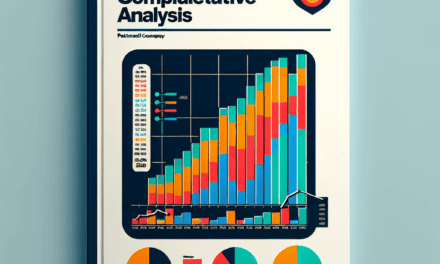“Navigating Market Setbacks: Strategies for Capitalizing on Dow Jones Futures Climb.”
Introduction
Dow Jones futures have shown resilience by climbing despite recent market setbacks, reflecting investor optimism and strategic positioning. As economic indicators fluctuate and geopolitical tensions persist, market participants are seeking ways to navigate the volatility. This environment calls for adaptive strategies that focus on diversification, risk management, and identifying sectors poised for growth. By analyzing market trends and leveraging data-driven insights, investors can better position themselves to capitalize on opportunities while mitigating potential risks in an uncertain landscape.
Dow Jones Futures: Understanding the Current Trends
In recent weeks, the financial landscape has been marked by volatility, prompting investors to closely monitor the performance of key indices, including the Dow Jones Industrial Average. As market setbacks have become more pronounced, Dow Jones futures have shown a notable upward trend, suggesting a potential rebound in investor sentiment. Understanding the current trends in Dow Jones futures is essential for navigating this complex environment and formulating effective investment strategies.
To begin with, it is important to recognize the factors influencing the fluctuations in Dow Jones futures. Economic indicators, such as employment rates, inflation data, and consumer spending, play a significant role in shaping market expectations. For instance, recent reports indicating a slowdown in inflation have led to increased optimism among investors, as they anticipate that the Federal Reserve may adopt a more accommodative monetary policy. This shift in expectations can drive futures higher, reflecting a collective belief in a more stable economic outlook.
Moreover, geopolitical events and corporate earnings reports also contribute to the dynamics of Dow Jones futures. As companies within the index release their quarterly earnings, the results can either bolster or dampen market confidence. Positive earnings surprises often lead to a surge in futures, as investors react to the potential for growth and profitability. Conversely, disappointing results can trigger sell-offs, underscoring the importance of staying informed about corporate performance and broader economic trends.
In light of these factors, investors must adopt a proactive approach to their strategies. One effective method is diversification, which can help mitigate risks associated with market volatility. By spreading investments across various sectors and asset classes, investors can reduce their exposure to any single economic event or corporate performance issue. This strategy not only provides a buffer against downturns but also positions investors to capitalize on potential upswings in different areas of the market.
Additionally, employing technical analysis can offer valuable insights into market trends and potential entry or exit points for investments. By examining historical price movements and trading volumes, investors can identify patterns that may indicate future performance. This analytical approach can be particularly useful in a fluctuating market, as it allows investors to make informed decisions based on empirical data rather than emotional reactions to market news.
Furthermore, maintaining a long-term perspective is crucial in navigating the current market environment. While short-term fluctuations can be disconcerting, history has shown that markets tend to recover over time. By focusing on long-term goals and remaining committed to a well-thought-out investment strategy, investors can avoid the pitfalls of panic selling and instead position themselves for future growth.
In conclusion, the recent climb in Dow Jones futures amid market setbacks highlights the importance of understanding current trends and their implications for investment strategies. By recognizing the factors that influence market movements, diversifying portfolios, utilizing technical analysis, and maintaining a long-term perspective, investors can navigate the complexities of the financial landscape with greater confidence. As the market continues to evolve, staying informed and adaptable will be key to seizing opportunities and mitigating risks in the pursuit of financial success.
Analyzing Market Setbacks: Causes and Implications
In recent weeks, the financial landscape has been marked by notable market setbacks, prompting investors and analysts alike to scrutinize the underlying causes and implications of these fluctuations. Understanding the dynamics at play is essential for navigating the complexities of the current economic environment. One of the primary factors contributing to these setbacks has been the persistent inflationary pressures that have gripped the economy. Rising prices for essential goods and services have led to increased costs for businesses, which in turn have affected profit margins and consumer spending. As inflation continues to outpace wage growth, consumer confidence has wavered, resulting in a cautious approach to spending that further exacerbates market volatility.
Moreover, geopolitical tensions have played a significant role in shaping market sentiment. Events such as trade disputes, military conflicts, and political instability can create uncertainty that rattles investor confidence. For instance, ongoing tensions in various regions have led to fluctuations in oil prices, which not only impact energy stocks but also have a ripple effect on other sectors of the economy. As investors grapple with these uncertainties, they often retreat to safer assets, leading to a decline in stock prices and overall market performance.
In addition to these external factors, the Federal Reserve’s monetary policy decisions have also influenced market dynamics. As the central bank navigates the delicate balance between curbing inflation and supporting economic growth, its actions can lead to significant market reactions. Recent signals from the Fed regarding interest rate hikes have prompted investors to reassess their portfolios, leading to increased volatility in the stock market. The anticipation of tighter monetary policy can create a ripple effect, as higher borrowing costs may dampen corporate investment and consumer spending, further contributing to market setbacks.
As we analyze these market setbacks, it is crucial to consider their implications for investors moving forward. The current environment necessitates a strategic approach that emphasizes diversification and risk management. Investors should be mindful of the sectors that are more resilient in the face of economic headwinds, such as utilities and consumer staples, which tend to perform better during periods of uncertainty. By reallocating resources into these defensive sectors, investors can mitigate potential losses while positioning themselves for future growth.
Furthermore, adopting a long-term perspective can be beneficial in navigating market fluctuations. While short-term volatility can be unsettling, history has shown that markets tend to recover over time. Therefore, maintaining a disciplined investment strategy that focuses on fundamental analysis and long-term goals can help investors weather the storm. Additionally, incorporating alternative investments, such as real estate or commodities, can provide further diversification and act as a hedge against inflation.
In conclusion, while recent market setbacks have raised concerns among investors, understanding the underlying causes and implications can provide valuable insights for moving forward. By recognizing the impact of inflation, geopolitical tensions, and monetary policy on market dynamics, investors can develop strategies that emphasize diversification and long-term growth. As the financial landscape continues to evolve, a proactive and informed approach will be essential for navigating the complexities of the market and capitalizing on future opportunities.
Investment Strategies During Market Volatility
In the ever-evolving landscape of financial markets, periods of volatility can often induce uncertainty among investors. However, such fluctuations also present unique opportunities for those who are prepared to navigate the complexities of market dynamics. As the Dow Jones futures climb amid recent market setbacks, it becomes imperative to explore effective investment strategies that can help investors not only weather the storm but also capitalize on potential gains.
One of the foremost strategies during times of market volatility is diversification. By spreading investments across various asset classes, sectors, and geographic regions, investors can mitigate risks associated with any single investment. This approach not only cushions the impact of downturns but also positions investors to benefit from sectors that may perform well even in challenging economic conditions. For instance, while technology stocks may experience fluctuations, defensive sectors such as utilities or consumer staples often provide stability and consistent returns. Therefore, a well-diversified portfolio can serve as a robust foundation during turbulent times.
In addition to diversification, adopting a long-term perspective is crucial. Market volatility can tempt investors to react impulsively, often leading to hasty decisions that may not align with their overall financial goals. By maintaining a long-term outlook, investors can ride out short-term fluctuations and focus on the underlying fundamentals of their investments. Historical data shows that markets tend to recover over time, and those who remain committed to their investment strategies are often rewarded. This approach encourages patience and discipline, allowing investors to avoid the pitfalls of emotional decision-making.
Moreover, dollar-cost averaging is another effective strategy that can be employed during periods of volatility. This technique involves consistently investing a fixed amount of money at regular intervals, regardless of market conditions. By doing so, investors can take advantage of lower prices during downturns, ultimately reducing the average cost of their investments over time. This method not only alleviates the pressure of trying to time the market but also fosters a disciplined investment habit that can yield positive results in the long run.
Furthermore, it is essential for investors to stay informed and conduct thorough research. Understanding market trends, economic indicators, and geopolitical events can provide valuable insights that inform investment decisions. By keeping abreast of relevant news and analysis, investors can better anticipate potential market movements and adjust their strategies accordingly. This proactive approach enables investors to make informed choices rather than relying solely on speculation or fear.
Lastly, considering alternative investments can also be a prudent strategy during volatile periods. Assets such as real estate, commodities, or even cryptocurrencies may offer diversification benefits and serve as a hedge against traditional market fluctuations. While these investments come with their own set of risks, they can provide opportunities for growth and income that are less correlated with stock market performance.
In conclusion, while market volatility can be daunting, it also presents opportunities for strategic investors. By embracing diversification, maintaining a long-term perspective, employing dollar-cost averaging, staying informed, and exploring alternative investments, individuals can navigate the complexities of the market with confidence. As the Dow Jones futures continue to climb amid setbacks, these strategies can empower investors to not only endure the challenges but also thrive in an ever-changing financial landscape.
The Role of Economic Indicators in Dow Jones Futures
The performance of Dow Jones futures is intricately linked to a variety of economic indicators that provide insights into the overall health of the economy. These indicators serve as critical barometers for investors, influencing their expectations and decisions regarding future market movements. As such, understanding the role of these economic indicators is essential for navigating the complexities of the financial landscape, particularly during periods of market setbacks.
One of the most significant economic indicators is the Gross Domestic Product (GDP), which measures the total value of goods and services produced within a country. A rising GDP typically signals economic growth, leading to increased investor confidence and, consequently, a positive impact on Dow Jones futures. Conversely, a declining GDP can raise concerns about economic contraction, prompting investors to reassess their positions and potentially leading to downward pressure on futures.
In addition to GDP, employment data plays a crucial role in shaping market sentiment. The unemployment rate, along with job creation figures, provides insights into the labor market’s health. A decrease in unemployment often correlates with increased consumer spending, which can boost corporate earnings and, in turn, support higher Dow Jones futures. On the other hand, rising unemployment can signal economic distress, leading to cautious investor behavior and a potential decline in futures.
Inflation is another key economic indicator that significantly influences Dow Jones futures. Measured by the Consumer Price Index (CPI) and the Producer Price Index (PPI), inflation reflects the rate at which prices for goods and services rise. Moderate inflation is generally viewed as a sign of a growing economy; however, excessive inflation can erode purchasing power and lead to tighter monetary policy from the Federal Reserve. Such actions, including interest rate hikes, can dampen market enthusiasm and negatively impact Dow Jones futures.
Moreover, consumer confidence indices provide valuable insights into how households perceive the economy. High consumer confidence typically leads to increased spending, which can drive corporate profits and support higher stock prices. Conversely, low consumer confidence may result in reduced spending, prompting investors to adjust their expectations for future earnings and potentially leading to declines in Dow Jones futures.
Another important factor is the performance of key sectors within the economy, such as manufacturing and services. The Purchasing Managers’ Index (PMI) is a widely followed indicator that gauges the health of these sectors. A PMI above 50 indicates expansion, while a reading below 50 suggests contraction. Strong performance in these sectors can bolster investor sentiment and support upward movement in Dow Jones futures, while weak performance can have the opposite effect.
In light of these economic indicators, investors must remain vigilant and adaptable. By closely monitoring these metrics, they can better anticipate market trends and make informed decisions. Furthermore, diversifying investment portfolios and employing risk management strategies can help mitigate potential losses during periods of economic uncertainty. As the market continues to navigate challenges, understanding the interplay between economic indicators and Dow Jones futures will be crucial for investors seeking to position themselves for future growth. Ultimately, a proactive approach that incorporates these insights can empower investors to make strategic decisions, even amid market setbacks.
Diversification: A Key Strategy for Resilience
In the ever-evolving landscape of financial markets, the importance of diversification as a strategy for resilience cannot be overstated. As investors navigate the complexities of market fluctuations, particularly in light of recent setbacks, the concept of spreading investments across various asset classes emerges as a fundamental approach to mitigating risk. Diversification serves not only as a buffer against volatility but also as a means to enhance potential returns over the long term.
To begin with, diversification involves allocating capital across different types of investments, such as stocks, bonds, real estate, and commodities. This strategy is predicated on the principle that not all asset classes will react similarly to market events. For instance, while equities may experience downturns due to economic uncertainty, fixed-income securities often provide stability and income during such periods. By holding a mix of assets, investors can reduce the impact of poor performance in any single investment, thereby fostering a more stable overall portfolio.
Moreover, diversification can extend beyond asset classes to include geographic regions and sectors. Investing in international markets can offer exposure to growth opportunities that may not be available domestically. For example, emerging markets may present higher growth potential, albeit with increased risk. By incorporating a global perspective, investors can capitalize on varying economic cycles and trends, further enhancing their portfolio’s resilience. Additionally, sector diversification allows investors to spread risk across industries that may respond differently to economic changes. For instance, while technology stocks may thrive during periods of innovation, consumer staples often provide stability during economic downturns.
Transitioning from the theoretical underpinnings of diversification, it is essential to consider practical implementation strategies. Investors should begin by assessing their risk tolerance and investment goals. A well-defined investment strategy will guide the selection of assets that align with individual objectives. For instance, a conservative investor may prioritize bonds and dividend-paying stocks, while a more aggressive investor might lean towards growth stocks and alternative investments. This tailored approach ensures that diversification is not merely a checkbox exercise but a strategic alignment with personal financial aspirations.
Furthermore, regular portfolio rebalancing is a critical component of maintaining diversification. Over time, certain assets may outperform others, leading to an unintended concentration of risk. By periodically reviewing and adjusting the portfolio to maintain the desired asset allocation, investors can ensure that they remain aligned with their risk tolerance and investment goals. This proactive management not only preserves the benefits of diversification but also allows investors to capitalize on market opportunities as they arise.
In conclusion, as the Dow Jones futures climb amid market setbacks, the significance of diversification as a key strategy for resilience becomes increasingly apparent. By spreading investments across various asset classes, geographic regions, and sectors, investors can effectively mitigate risk and enhance their potential for long-term growth. Implementing a thoughtful diversification strategy, coupled with regular portfolio rebalancing, empowers investors to navigate market uncertainties with greater confidence. Ultimately, embracing diversification not only fortifies portfolios against volatility but also positions investors to seize opportunities in an ever-changing financial landscape.
Long-Term vs. Short-Term Trading Approaches
In the ever-evolving landscape of financial markets, the distinction between long-term and short-term trading approaches is crucial for investors seeking to navigate periods of volatility, such as those currently reflected in the Dow Jones futures. As market conditions fluctuate, understanding the merits and drawbacks of each strategy can empower traders to make informed decisions that align with their financial goals and risk tolerance.
Long-term trading, often characterized by a buy-and-hold strategy, focuses on the fundamental value of assets over extended periods. Investors who adopt this approach typically analyze economic indicators, company performance, and industry trends to identify stocks that are likely to appreciate over time. This strategy is particularly advantageous during market downturns, as it allows investors to weather short-term fluctuations without succumbing to panic selling. By maintaining a long-term perspective, investors can capitalize on the inherent growth potential of their chosen assets, often benefiting from compounding returns and reduced transaction costs associated with frequent trading.
Conversely, short-term trading, which includes day trading and swing trading, emphasizes quick decision-making and rapid execution. Traders in this category often rely on technical analysis, utilizing charts and indicators to identify patterns and trends that can signal potential price movements. While this approach can yield substantial profits in a short timeframe, it also carries a higher level of risk. Market setbacks can lead to significant losses if traders are unable to react swiftly to changing conditions. Moreover, the emotional toll of short-term trading can be considerable, as the constant need to monitor positions and make quick decisions can lead to stress and burnout.
As the Dow Jones futures climb amid recent market setbacks, investors may find themselves contemplating which approach best suits their circumstances. For those with a long-term investment horizon, the current market volatility may present an opportunity to acquire undervalued assets. By focusing on companies with strong fundamentals and a history of resilience, long-term investors can position themselves to benefit from future recoveries. Additionally, dollar-cost averaging—investing a fixed amount regularly—can mitigate the impact of market fluctuations, allowing investors to build their positions gradually over time.
On the other hand, short-term traders may need to adapt their strategies in response to the current market environment. With heightened volatility, it is essential for these traders to implement robust risk management techniques, such as setting stop-loss orders and diversifying their portfolios. By doing so, they can protect their capital while still taking advantage of potential short-term gains. Furthermore, staying informed about macroeconomic developments and market sentiment can provide valuable insights that inform trading decisions.
Ultimately, the choice between long-term and short-term trading approaches depends on individual preferences, financial goals, and risk tolerance. While long-term investors may find solace in the stability of their strategies during turbulent times, short-term traders can thrive by remaining agile and responsive to market changes. As the Dow Jones futures continue to reflect the complexities of the current economic landscape, both types of investors can benefit from a thoughtful analysis of their strategies, ensuring they are well-equipped to navigate the challenges and opportunities that lie ahead. By understanding the strengths and weaknesses of each approach, investors can make strategic decisions that align with their objectives, fostering resilience in an unpredictable market.
Expert Insights: Navigating Future Market Challenges
As the financial landscape continues to evolve, investors are faced with a myriad of challenges that require astute navigation and strategic foresight. The recent fluctuations in the Dow Jones futures, despite broader market setbacks, underscore the importance of understanding market dynamics and adapting investment strategies accordingly. Experts emphasize that a proactive approach is essential for capitalizing on potential opportunities while mitigating risks associated with market volatility.
One of the primary insights from market analysts is the necessity of diversification. In times of uncertainty, relying on a single asset class can expose investors to significant risks. By spreading investments across various sectors, including equities, bonds, and alternative assets, investors can create a buffer against market downturns. This strategy not only helps in preserving capital but also positions investors to benefit from sectors that may perform well even in challenging economic conditions. For instance, while technology stocks may experience fluctuations, sectors such as healthcare or consumer staples might offer stability and growth potential.
Moreover, experts advocate for a long-term perspective when navigating market challenges. Short-term market movements can often be misleading, driven by emotional reactions rather than fundamental economic indicators. By focusing on long-term investment goals and maintaining a disciplined approach, investors can avoid the pitfalls of panic selling during downturns. This perspective encourages individuals to conduct thorough research and analysis, allowing them to make informed decisions based on the underlying value of their investments rather than transient market sentiments.
In addition to diversification and a long-term outlook, the importance of staying informed cannot be overstated. The financial markets are influenced by a multitude of factors, including economic data releases, geopolitical events, and changes in monetary policy. By keeping abreast of these developments, investors can better anticipate market movements and adjust their strategies accordingly. For instance, understanding the implications of interest rate changes can help investors make informed decisions about bond investments or equity valuations.
Furthermore, experts suggest that utilizing risk management techniques is crucial in navigating future market challenges. This includes setting stop-loss orders to limit potential losses and employing hedging strategies to protect against adverse market movements. By implementing these techniques, investors can safeguard their portfolios while still participating in potential upside opportunities. Additionally, maintaining a cash reserve can provide the flexibility to capitalize on attractive investment opportunities that may arise during market corrections.
As the market continues to experience fluctuations, it is also essential for investors to remain adaptable. The ability to pivot and reassess investment strategies in response to changing market conditions is a hallmark of successful investing. This adaptability may involve reallocating assets, exploring new investment vehicles, or even considering alternative strategies such as dollar-cost averaging to mitigate the impact of volatility.
In conclusion, while the current market environment presents challenges, it also offers opportunities for those who are prepared. By embracing diversification, maintaining a long-term perspective, staying informed, employing risk management techniques, and remaining adaptable, investors can navigate the complexities of the financial landscape with confidence. As the Dow Jones futures climb amid market setbacks, the strategies outlined by experts serve as a roadmap for moving forward, enabling investors to not only weather the storm but also thrive in the face of uncertainty.
Q&A
1. **What are Dow Jones futures?**
Dow Jones futures are financial contracts that allow investors to speculate on the future value of the Dow Jones Industrial Average, providing a way to hedge or gain exposure to the stock market.
2. **Why are Dow Jones futures climbing despite market setbacks?**
Dow Jones futures may climb due to positive economic indicators, investor sentiment, or expectations of favorable corporate earnings, even when the broader market faces challenges.
3. **What strategies can investors use when facing market setbacks?**
Investors can consider diversifying their portfolios, focusing on defensive stocks, employing dollar-cost averaging, or using options to hedge against potential losses.
4. **How can investors interpret the movement of Dow Jones futures?**
Investors can use Dow Jones futures as a gauge for market sentiment, indicating potential market direction before the stock market opens.
5. **What role do economic indicators play in influencing Dow Jones futures?**
Economic indicators, such as employment data, inflation rates, and GDP growth, can significantly impact investor expectations and, consequently, the movement of Dow Jones futures.
6. **What are some risks associated with trading Dow Jones futures?**
Risks include market volatility, leverage effects leading to amplified losses, and the potential for rapid changes in market sentiment that can lead to unexpected outcomes.
7. **How can investors stay informed about market conditions affecting Dow Jones futures?**
Investors can stay informed by following financial news, analyzing economic reports, and monitoring market trends and expert analyses related to the Dow Jones Industrial Average.
Conclusion
In conclusion, despite recent market setbacks, the rise in Dow Jones futures indicates a potential for recovery and resilience in the financial landscape. Investors should consider diversifying their portfolios, focusing on sectors with growth potential, and employing risk management strategies to navigate volatility. Staying informed and adaptable will be crucial for capitalizing on emerging opportunities while mitigating potential losses.





